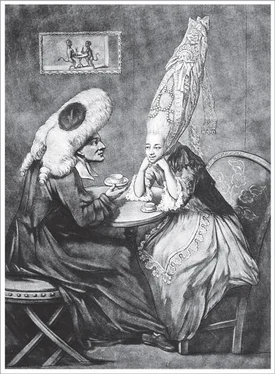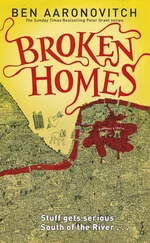Bill Bryson - At Home
Здесь есть возможность читать онлайн «Bill Bryson - At Home» весь текст электронной книги совершенно бесплатно (целиком полную версию без сокращений). В некоторых случаях можно слушать аудио, скачать через торрент в формате fb2 и присутствует краткое содержание. Жанр: Старинная литература, на английском языке. Описание произведения, (предисловие) а так же отзывы посетителей доступны на портале библиотеки ЛибКат.
- Название:At Home
- Автор:
- Жанр:
- Год:неизвестен
- ISBN:нет данных
- Рейтинг книги:4 / 5. Голосов: 1
-
Избранное:Добавить в избранное
- Отзывы:
-
Ваша оценка:
- 80
- 1
- 2
- 3
- 4
- 5
At Home: краткое содержание, описание и аннотация
Предлагаем к чтению аннотацию, описание, краткое содержание или предисловие (зависит от того, что написал сам автор книги «At Home»). Если вы не нашли необходимую информацию о книге — напишите в комментариях, мы постараемся отыскать её.
At Home — читать онлайн бесплатно полную книгу (весь текст) целиком
Ниже представлен текст книги, разбитый по страницам. Система сохранения места последней прочитанной страницы, позволяет с удобством читать онлайн бесплатно книгу «At Home», без необходимости каждый раз заново искать на чём Вы остановились. Поставьте закладку, и сможете в любой момент перейти на страницу, на которой закончили чтение.
Интервал:
Закладка:
Protocol required Darwin to step aside and allow Wallace full credit for the theory, but Darwin couldn’t bring himself to make such a noble gesture. The theory meant too much to him. A complicating factor at this time was that his son Charles, aged eighteen months, was gravely ill with scarlet fever. Despite this, Darwin found time to dash off letters to his most eminent scientific friends, and they helped him contrive a solution. It was agreed that Joseph Hooker and Charles Lyell would present summaries of both papers to a meeting of the Linnaean Society in London, giving Darwin and Wallace joint priority for the new theory. This they duly did on July 1, 1858. Wallace, far away in Asia, knew nothing of these machinations. Darwin didn’t attend because on that day he and his wife were burying their son.
Darwin immediately set to work expanding his sketch into a full-length book, and in November 1859 it was published as On the Origin of Species by Means of Natural Selection, or the Preservation of Favoured Races in the Struggle for Life . It was an immediate best seller. It is almost impossible now to imagine how much Darwin’s theory unsettled the intellectual world, or how desperately many people wished it not to be so. Darwin himself remarked to a friend that writing his book felt “like confessing to a murder.”
Many devout people simply couldn’t accept that the Earth was as ancient and randomly enlivened as all the new ideas indicated. One leading naturalist, Philip Henry Gosse, produced a somewhat desperate alternative theory called “prochronism” in which he suggested that God had merely made the Earth look old, to give people of inquisitive minds more interesting things to wonder over. Even fossils, Gosse insisted, had been planted in the rocks by God during his busy week of Creation.
Gradually, however, educated people came to accept that the world was not just older than biblically supposed but also much more complicated, imperfect, and confused. Naturally, all this undermined the confident basis on which clergymen like Mr. Marsham operated. In terms of their preeminence, it was the beginning of the end.
In their enthusiasm to unearth treasures, many of the new breed of investigators perpetrated some fairly appalling damage. Artifacts were dug from the soil “like potatoes,” in the words of one alarmed observer. In Norfolk, members of the new Norfolk and Norwich Archaeological Society—founded shortly before Mr. Marsham took up his position in our parish—stripped well over a hundred burial mounds, a good portion of the county total, without leaving any record of what they had found or how it was arrayed, to the despair of later generations of scholars.
There is a certain obvious and painful irony in the thought that just as Britons were discovering their past, they were simultaneously destroying a good part of it. Perhaps no one better exemplified this new breed of rapacious collector than William Greenwell (1820–1918), canon of Durham Cathedral, whom we met much earlier as the inventor of Greenwell’s glory, the celebrated (among those who celebrate such things) trout fly. In the course of a long career, Greenwell built up an extraordinary assemblage of artifacts “by gift, by purchase and by felony,” in the words of one historian. He single-handedly excavated—though devoured might be the better word—443 burial mounds all across England. His methods could be described as keen but slapdash. He left virtually no notes or records, so it is often all but impossible to know what came from where.
Greenwell’s one compensating virtue was that he introduced the resplendently named Augustus Henry Lane Fox Pitt Rivers to the magic of archaeology. Pitt Rivers is memorable for two things: being one of the most important early archaeologists, and the nastiest of men. We have met him in passing already in this volume. He was the formidable figure who insisted that his wife should be cremated. (“Damn it, woman, you shall burn” was his cheery catchphrase.) He came from an interesting family, some of whose members we have also encountered before, notably two great-aunts of his who could fairly be described as firecrackers. The first, Penelope, married Viscount Ligonier of Clonmell. It was she, you may recall, who had an affair with an Italian count, then ran off with her footman. The second was the young woman who married Peter Beckford but fell disastrously in love with his cousin William, builder of Fonthill Abbey. Both were the daughters of George Pitt, first Baron Rivers, from whom our Pitt Rivers took both halves of his name.
Augustus Pitt Rivers was a large and intimidating figure with a fiery temper at the end of a very short fuse who presided imperiously over an estate of twenty-seven thousand acres called Rushmore, near Salisbury. He was notoriously mean-spirited. His wife once invited local villagers to Rushmore for a Christmas party, and was heartbroken when no one turned up. What she didn’t know was that her husband, learning of her plans, had sent a servant to padlock the estate gates.
Pitt Rivers’s particular speciality—a kind of hobby, it would seem—was evicting aged tenants. On one occasion he served notice on a man and his crippled wife, both in their eighties. When they begged him to reconsider, as they had no living relatives and nowhere to go, he responded briskly: “I was extremely sorry to get your letter & to see how much you disliked leaving Hinton. To be brief I feel my duties to the property necessitate my occupying the house as soon as possible.” The couple were forthwith ejected, though in fact Pitt Rivers never moved in and, according to his biographer, Mark Bowden, almost certainly never intended to.
He was capable of the most sudden and disproportionate violence. After banishing one of his sons from the estate for some untold infraction, he forbade his other children to have any contact with him. But one daughter, Alice, took pity on her brother and met him at the estate edge to pass him some money. Learning of this, Pitt Rivers intercepted Alice as she returned to the house and beat her to the ground with her own riding crop.*
For all his personal shortcomings, Pitt Rivers was an outstanding archaeologist—indeed, was one of the fathers of modern archaeology. He brought method and rigor to the field. He carefully labeled shards of pottery and other fragments at a time when that was not routinely done. The idea of organizing archaeological finds into a systematic sequence—a process known as typology—was his invention. Unusually, he was less interested in glittering treasure than in the objects of everyday life—beakers, combs, decorative beads, and the like—which had mostly gone undervalued theretofore. He also brought to archaeology a devotion to precision. He invented a device called a craniometer, which could make very exact measurements of human skulls. After his death, his collection of artifacts formed the foundation of the great Pitt Rivers Museum in Oxford.
Thanks in large part to Pitt Rivers’s exacting methodology, by the second half of the nineteenth century archaeology was becoming more like a science and less like a treasure hunt, and the more careless excesses of the early antiquaries were becoming a thing of the past. In the wider world, however, destruction was getting worse. Practically all the ancient monuments in Britain were in private hands, and no law compelled owners to look after them. Stories abounded of people destroying artifacts, either because they found them a nuisance or failed to appreciate their rarity. In Orkney, a farmer at Stenness, not far from Skara Brae, demolished a prehistoric megalith known as the Stone of Odin because it was in his way when he plowed. He was about to start in on the now-famous Stones of Stenness when horrified islanders persuaded him to desist.
Читать дальшеИнтервал:
Закладка:
Похожие книги на «At Home»
Представляем Вашему вниманию похожие книги на «At Home» списком для выбора. Мы отобрали схожую по названию и смыслу литературу в надежде предоставить читателям больше вариантов отыскать новые, интересные, ещё непрочитанные произведения.
Обсуждение, отзывы о книге «At Home» и просто собственные мнения читателей. Оставьте ваши комментарии, напишите, что Вы думаете о произведении, его смысле или главных героях. Укажите что конкретно понравилось, а что нет, и почему Вы так считаете.












